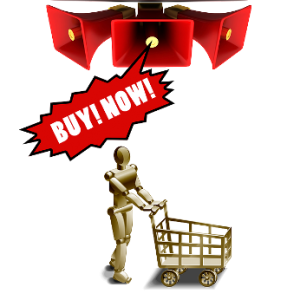 When you’re trying to reach a particular audience, your success depends on how thoroughly you’re able to target them.
When you’re trying to reach a particular audience, your success depends on how thoroughly you’re able to target them.
It also depends on your market positioning and segmentation, but to achieve both of those you need, first and foremost, to know who your ideal buyer is – and how to reach him (or her).
These 6 steps will give you a clear road map for how to target your ideal buyer.
Identify Your Customer Profile
This is more complex than identifying whether your ideal customer is an individual or a businessperson. You need to determine what solution your product or service offers the buyer. This might seem intuitive, but it’s like Features vs. Benefits—the answer isn’t always obvious. For example, what does an Enterprise management company really offer? A product/service, or a solution to a problem?
In the B2B environment, it’s necessary to drill down deeper than just identifying companies who can make use of your solution. Is your ideal buyer the “chooser” or the “end user?” Specifically, who in the company is your buyer— the CEO, the CIO or CMO? Or does your typical customer have a purchasing department and if so, who has the authority needed to make the buying decision for your product category?
Gather Data
To target your buyer effectively, you need to research him and understand what his needs and wants are, as well as the triggers that guide him to the next stage of his buying cycle. This requires research, so gather data such as:
- Company financial information
- Recent sales volumes
- Delivery turnaround times
- Target’s levels of customer satisfaction
- Location
- Storage capabilities
This intelligence will help you to determine the customer’s buying power, and whether he is in the market for your offering.
For B2C clients, you need basic demographic information, but the more in-depth knowledge you have of his circumstances and requirements, the better your targeting will be.
Create Buyer Personas
Creating buyer personas is a complex process. According to a study by ITSMA, only 15% of respondents were satisfied that they got it right. Unless your offering is highly specialized, it’s likely you’ll need more than one persona. On average, most marketers create four main personas to represent segments of their market, although you can have more if you need to according to Barbra Gago, Director of Marketing and Growth at
Greenhouse Software
Gago suggests assigning a name to each persona, along with full lifestyle scenario: Name, age, familial circumstances, income level, career goals and aspirations (particularly important for B2B), pain points, interests and hobbies. One of the best ways to do this, says HubSpot’s Ellie Mirman, is to recruit interviewees from your pool of existing customers. Ask them questions such as:
- What does a day in their lives look like?
- What experience are they looking for when they purchase your product or service?
- What are the common objections when they’re considering making a buying decision?
Determine How to Reach Buyers
Once you know who you’re targeting, the “how” becomes the primary question. How do you reach them, using what media channels, and which methods/formats are most effective?
To answer this, you need to establish where your ideal buyer goes for information. Does he typically search online? Does he consume content such as blog posts, articles or video clips? What are his thoughts about direct mail and email marketing, and which sources does he trust—recommendations from friends and colleagues, peer reviews or industry experts?
When you know the answers to these questions, you can develop your presence in these places and work on building your credibility in the buyer community.
Develop Suitable, Compelling Content
Creating content that convinces your buyer to take action is a fine art. Statistics show when your target accesses your material, you have 30 seconds to convince him you can help. Your buyer, not your solution, needs to be the focus of your content, according to the Buyer Persona Institute:
- Develop a content strategy and get everyone involved on board with the approach you want to take.
- Create content grounded in insights about your buyer’s reasons to choose you over your competitors.
- Dump the marketing-speak in favour of customer-centric material that informs, educates and provides valuable advice. Your buyer is much likely to come back if you’re telling him what he needs to know, rather than trying to sell him your product, according to statistics from Jacobs and Clevenger.
Promote in the Right Places
Promote your company, your content and your solution in all the places where your buyer is likely to be found.
- Engage with him online through discussion forums, and get it in front of his eyes through marketing automation and CRM programs.
- Use social media: Your ideal buyer is a person first, and the majority of educated people with purchasing power in the Western hemisphere are on social media–even in.
Use Social Media
Your ideal buyer is a person first, and the majority of educated people with purchasing power in the Western hemisphere are on social media–even in the B2B environment.
Employ best search engine optimization practices to get found online. And when your buyer starts to bite, shepherd him through the various stages of his buying cycle using effective lead nurturing methods until he becomes a loyal customer.
Author: Todd Mumford
www.riverbedmarketing.com
Leave a Reply
You must be logged in to post a comment.